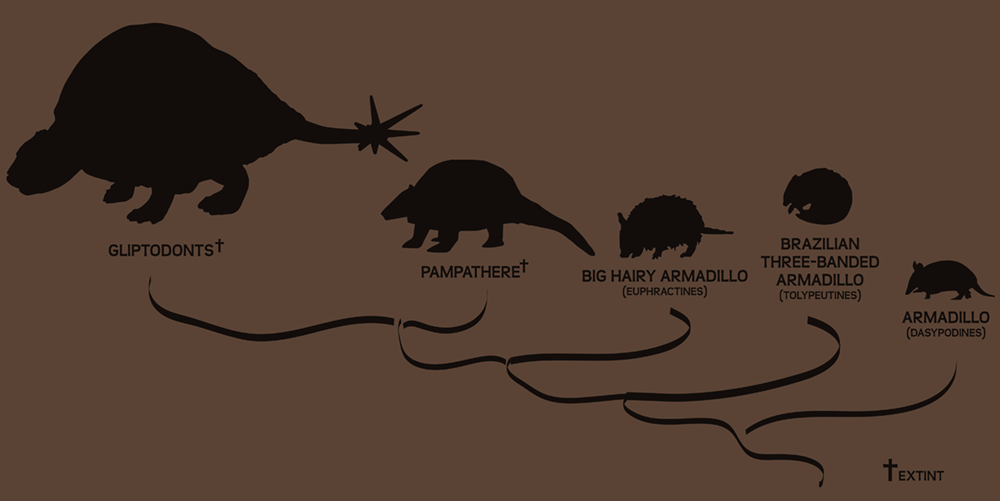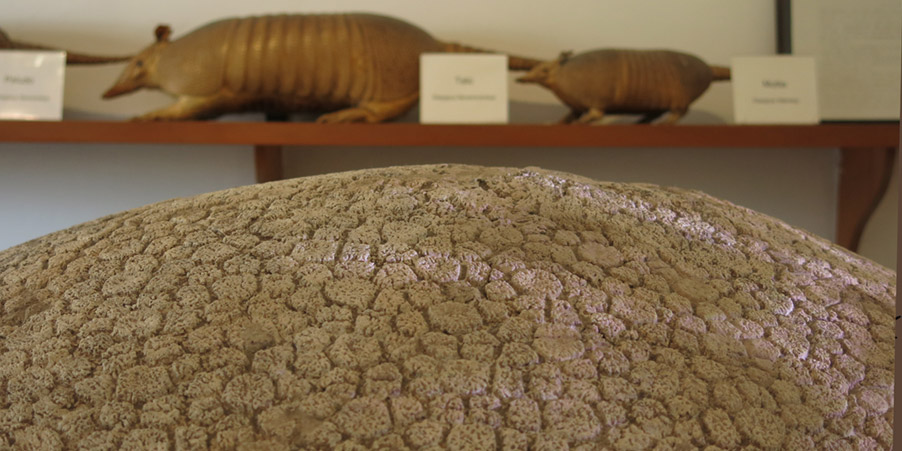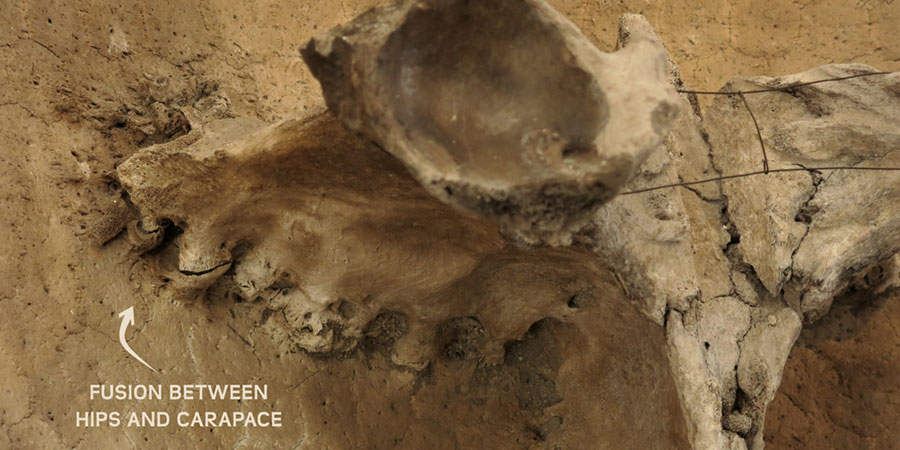Comparing scutes
Gliptodonts’ carapace













0.0 mm
| Plane | Position | Flip |
| Show planes | Show edges |

 Initial view
Initial view
 Zoom In
Zoom In
 Zoom Out
Zoom Out
 Enable light control
Enable light control
 Enable Measure tool
Enable Measure tool
 Enable plane sections
Enable plane sections
 Full screen
Full screen
Drag: Rotate model
Drag + CTRL: Pan model
 Glyptodon
Glyptodon Panochthus
Panochthus Doedicurus
DoedicurusClick the buttons above to turn on or off the 3D models in the viewer

Glyptodonts
During the Pleistocene, in Uruguay and the vast majority of South America, it was easy to find three genera of glyptodonts: Glyptodon, Panochthus and Doedicurus. These animals were xenarthrans with carapaces, very similar and closely related to living armadillos, except that they weighed around or even over a ton. The carapaces in these animals, just like in the case of living armadillos, were made up of thousands of small scutes. It is for this reason that they are so commonly found in the Uruguayan coastline.
It is possible to differentiate the three genera of glyptodonts by looking at their scutes, since these have different patterns on their surfaces. The scutes that belong to Glyptodon look like flowers with seven or eight petals, those of Panochthus look like beehives and those of Doedicurus have holes in them.
Look at the differences between the scutes in the 3D models.

Phylogeny and extinction
Glyptodonts belong to a different group from armadillos, although they are closely related. These two groups form the Cingulata. Unlike the armadillos, the glyptodonts, along with many other large animals, were victims of the Pleistocene extinction that occurred 10,000 years ago.

A carapace made of scutes
Glyptodonts could have over 1,500 scutes in their carapaces!

Fusion between the carapace and the bones
Within the Cingulata, the glyptodonts had a very high level of fusion between the carapace and the vertebrae and hips, even higher than in armadillos. In these animals the carapace is rigid, unlike in armadillos, and the vertebrae and hips fuse to it. This is very similar to what happens in the skeletons of turtles.





